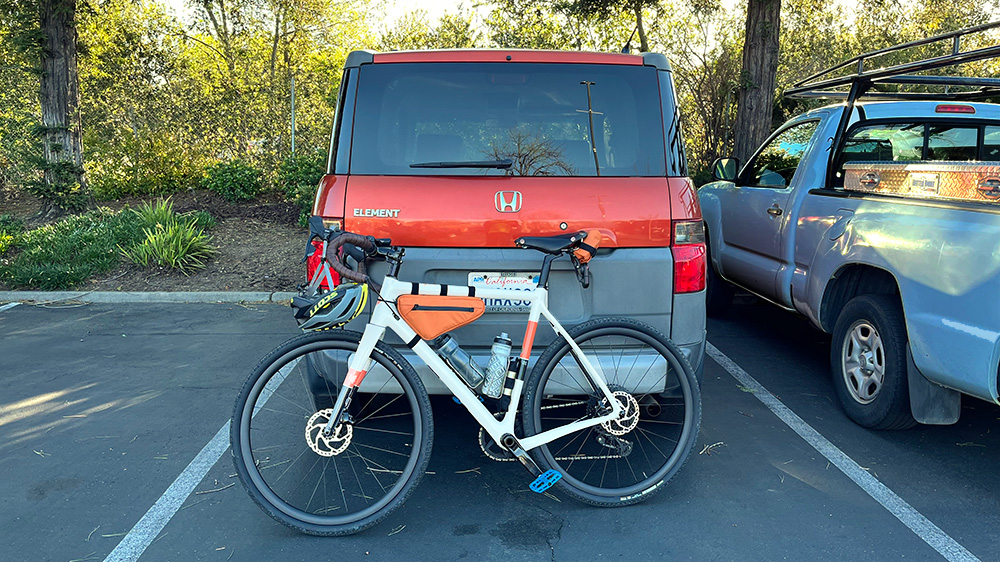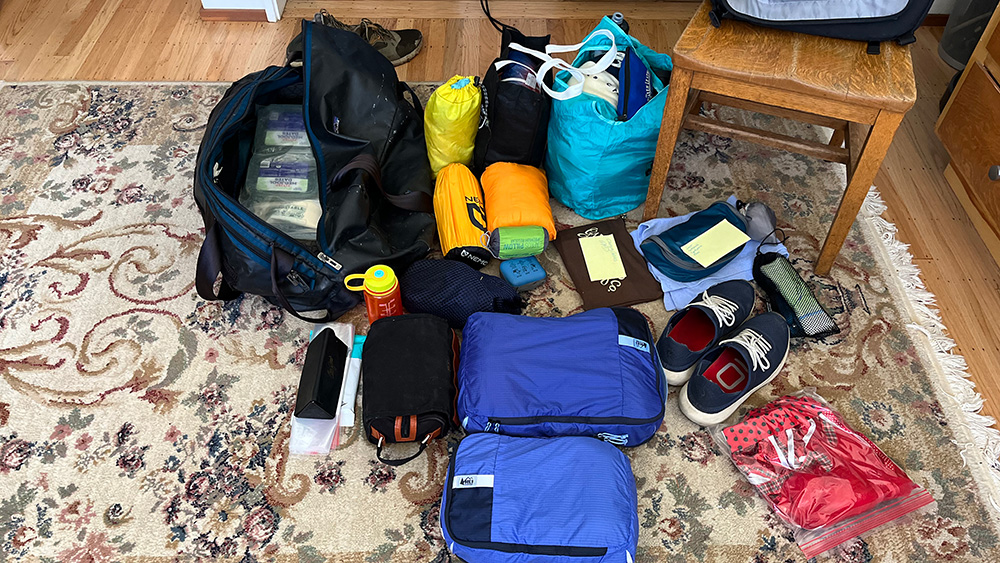
As Kathy wrote in her Different Strokes post, we do approach cycling—and, well, life—differently. Reaching some middle ground is probably going to be our single largest challenge in riding the tandem together.
She’s right: I guess I do take things pretty seriously on the bike. I don’t know that I ever thought of it that way before. To me, cycling is like everything else: you do it as well as you can. So yes, I am most often the one who asks for a different gear because I am more concerned about how our cadence is affecting our performance than Kathy is.
Which is not to say I am focused on riding as fast as possible. Just as efficiently as we can. It’s really the only way to put a long day in the saddle and feel well enough at the end of the ride to want to do it again. And to be able to do it again and again for seven days. It’s also not to say that I dictate cadence and Kathy shifts at my command then grins and bears it. We communicate constantly about what gear we’re in and how comfortable she is with it. I know she toughs out some faster pedaling than she prefers at times, as I do slower pedal speeds at other times. It’s part of the give and take.
In a similar vein, she and I approach rest stops differently. I see rest stops as potential black holes. Don’t get me wrong, I love stopping at them. The break is nice and it’s essential to top off water, grab some food, etc. But my goal is to be in and out in no more than 15 minutes. Longer break at lunch, of course . . . but not much. There is an Odyssean Lotus Land quality about rest stops in the middle of a long ride. It’s so lovely to be off the bike and to sit around and eat and drink and visit with nice people. And that’s dangerous.
It’s not that I’m a hardass about breaks. Ask any long-distance cyclist and they’ll tell you the same thing. The longer you sit, the more your legs hurt once you get going again. If it’s a warm day, it’s only going to get hotter. A breeze in the morning might be a headwind in the afternoon. And this ride has time constraints. I know I’m a chronic worrier, but in the back of my mind I’m always aware of how close to the cutoff time we’re getting as the day goes on. Always wondering if we have enough of a cushion to allow for a flat tire or a broken chain, or if one of us bonks and has no choice but to take a long rest.
At the same time I recognize our different takes on rest stops. Where Kathy doesn’t mind waiting lines because she loves the people whom she meets, the deep impromptu conversations she experiences, my bliss is out on the road, turning the pedals over, feeling the texture of the surface through the tires, sensing the state of Kathy’s mood, strength, and fatigue conveyed forward to me through the steel of the bike frame: the power when she’s really pushing, or the hesitation in her pedal stroke when she’s nervous, or an uncharacteristic period of silence, which usually signals discomfort. I enjoy doing everything I can to make the ride go as smoothy as possible for both of us, literally and metaphorically.
So, different strokes. I have to balance my worries and preferences against Kathy’s. It makes no sense to ride together if we don’t both get what we want. After all, what good is helping her finish this ride if she doesn’t enjoy it? So where is the balance between my desire to pedal faster and her desire to pedal slower, or harder? Is fifteen minutes each at multiple rest stops enough time for her to spend with the people she loves to meet? Or will she resent my pressuring her to get a move on? And if we stay longer, will that just make me irritable and a lousy tandem partner?
Like Kathy says, “Somehow we’ve gotta find a good middle ground and get through this thing.” I have no doubt we will—otherwise I never would have suggested we do this ride together—but part of me also worries because we’ve only got ten more weeks of training to work out the kinks.

